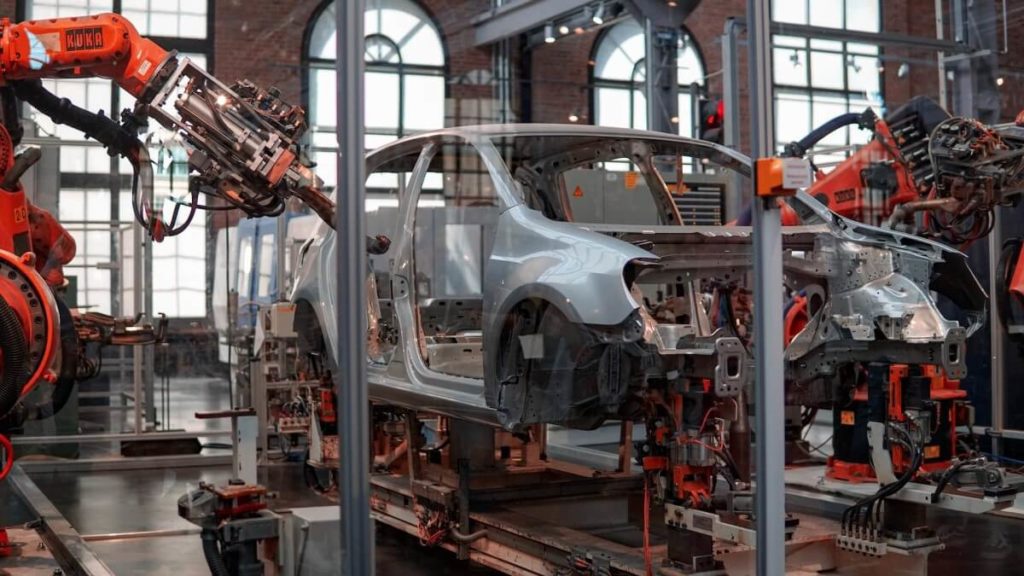
HYPERVSN 3D Catalog
USD 1,200
Qty

HYPERVSN 3D Catalog
USD 1,200
Qty

HYPERVSN 3D Catalog
USD 1,200
Qty
Cart Subtotal:
USD 3,600

HYPERVSN
Marketing Department
The Industrial IoT (Internet of Things) or IIoT is a term that refers to the use of connected devices and advanced analytics in various industries, such as manufacturing, transportation, energy, and healthcare. The IIoT is a subset of the Internet of Things (IoT), the general term for the network of devices communicating with each other and central systems over the Internet.
The IIoT aims to improve the efficiency, productivity, quality, safety, and sustainability of industrial operations by leveraging data from sensors, machines, and other sources. The data can be processed and analyzed in real-time or stored for later use, enabling insights and actions that can optimize performance, reduce costs, and prevent failures.
IIoT helps manufacturers optimize production processes, reduce waste and downtime, enhance product quality, and monitor equipment performance and maintenance. For instance, Airbus uses IIoT to streamline its jetliner assembly operations by integrating sensors into tools and machines on the shop floor and giving workers wearable technology to reduce errors and boost safety. ABB uses IIoT to monitor its robots’ maintenance needs across five continents and trigger repair before parts break.
Using IIoT, farmers increase crop yield, reduce water and fertilizer consumption, detect pests and diseases, and automate irrigation and harvesting. For example, John Deere uses IIoT to equip its tractors and combines them with sensors and GPS that collect and analyze data on soil conditions, weather, crop health, and machine performance. Hortilux uses IIoT to provide smart lighting solutions for greenhouses that adjust to optimal light spectrum and intensity for different plants.
IIoT can help energy producers and distributors improve grid reliability, efficiency, security, and sustainability by monitoring and controlling power generation, transmission, distribution, and consumption. For example, GE uses IIoT to connect its wind turbines, solar panels, gas turbines, and other assets to its Predix platform, which analyzes data and provides insights for optimizing performance and reducing emissions. Enel uses IIoT to deploy smart meters that enable real-time billing and demand response.
With IIoT, transportation companies enhance their fleet management, logistics, safety, and customer service by tracking and optimizing the movement of vehicles, goods, and passengers. For example, Tesla uses IIoT to connect its electric cars to its cloud platform, which collects data on battery status, driving behaviour, location, and traffic conditions. UPS uses IIoT to equip its delivery trucks with sensors that measure speed, mileage, fuel consumption, route efficiency, and driver performance.
IIoT can help healthcare providers improve patient care, diagnosis, treatment, and prevention by connecting medical devices, wearables, implants, and records. For example, Philips uses IIoT to provide remote patient monitoring solutions that collect vital signs and other data from patients at home and in hospitals. Medtronic uses IIoT to offer insulin pumps that automatically adjust the dosage based on glucose levels measured by a continuous glucose monitor.
The benefits of IIoT are significant, but so are the challenges. The IIoT requires a robust and secure network infrastructure that can support high bandwidth, low latency, and high availability of data transmission. The IIoT also requires advanced data management and analytics capabilities that can handle large volumes and a variety of data from different sources and formats. Moreover, IIoT involves complex integration and interoperability issues among multiple devices, systems, platforms, and standards.
To overcome these challenges and realize the full potential of the Industrial IoT, organizations need to adopt a holistic approach that covers strategy, technology, organization, and culture. Companies need to define clear goals and use cases for the IIoT that align with their business objectives and customer needs.
Organizations also need to invest in the right technologies and solutions that can enable connectivity, security, scalability, and intelligence of the IIoT. Furthermore, fostering a culture of innovation and collaboration will support the adoption and implementation of IIoT across different functions and stakeholders.
The Industrial IoT is not a futuristic concept. It is already here and transforming various industries. The IIoT offers tremendous opportunities for organizations to improve their operations and create new value. However, the IIoT also poses significant challenges that require careful planning and execution. Organizations that want to succeed in the IIoT era should embrace change and innovation with a clear vision and strategy.




subscribe

USD 1,200
Qty

USD 1,200
Qty

USD 1,200
Qty
Cart Subtotal:
USD 3,600☎️